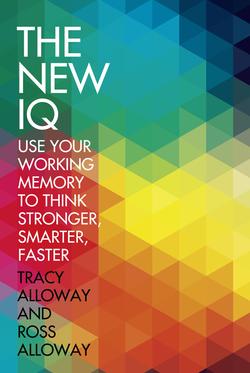Читать книгу The New IQ: Use Your Working Memory to Think Stronger, Smarter, Faster - Tracy Alloway - Страница 10
Working Memory in the Brain
ОглавлениеFor more than the past decade, scientists have been using advanced brain imaging to examine how working memory functions in the brain. Their results reveal that using working memory involves a number of areas in the brain. On the next page are some of the major players:
Major Players in Working Memory
Prefrontal cortex (PFC): The PFC is the home of working memory. Located in the front of the brain, the PFC coordinates with other areas of the brain through electrical signals and receives information from those regions so your working memory can make use of it. Brain-imaging scans show that when working memory is being used, the PFC glows while it fires thoughts to and works with information from the different brain regions. Working memory is the primary function of the PFC. Though the PFC is the area most often associated with working memory, it is important to note that scientists have also found activation in other areas of the brain, such as the parietal cortex and the anterior cingulate, when people perform a working memory task.
Hippocampus: The hippocampus is where the vast amount of knowledge you have acquired over your lifetime is housed for long-term storage. It is the location of long-term memory (LTM). Your working memory allows you to sift through all the information you have stored in your long-term memory, and pull out the bits most relevant to the task at hand. It gives you the ability to combine that stored knowledge with new information coming in, and to put new information into your long-term memory.
Amygdala: The amygdala is the brain’s emotional center. When you are experiencing a strong emotion, like fear, your amygdala is activated. Working memory is also important to emotional control, managing the emotional information coming from the amygdala and preventing it from distracting you from the task you’re working on. If someone yells “Fire!” in the cinema, your working memory would help you to control the fear coming from your amygdala so that you can exit in an orderly fashion without creating a panic.
Intraparietal sulcus: Located at the top back portion of the brain, the intraparietal sulcus is the brain’s math center. When you need to perform calculations, such as in choosing the best mortgage loan or guesstimating how many more miles you can go on a quarter tank of gas, your working memory relies on it to get the answer. In fact, the intraparietal sulcus is so important to math skills that when researchers used mild electrical currents in order to take it offline, participants struggled to perform simple math tasks, like deciding whether 4 was bigger than 2.
Broca’s area: Situated on the left side of the frontal lobes, Broca’s area is involved in language comprehension and verbal fluency. Whenever you are writing or interacting with friends, family, colleagues, or a love interest, your working memory is processing information sent from this area. Whether you are a quick-witted verbal gymnast or you tend to stumble over your words depends in part on the strength of your working memory. We recently saw this play out at a wedding when the best man stood up to give the toast and then realized he had left his notes in the car. Instead of stumbling over a bunch of “ums” and “uhs,” his working memory and Broca’s area worked together to help him craft an eloquent, heartfelt toast on the spot.
